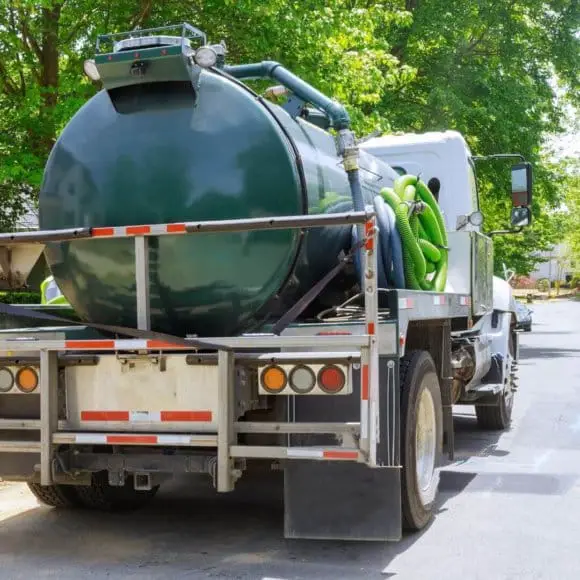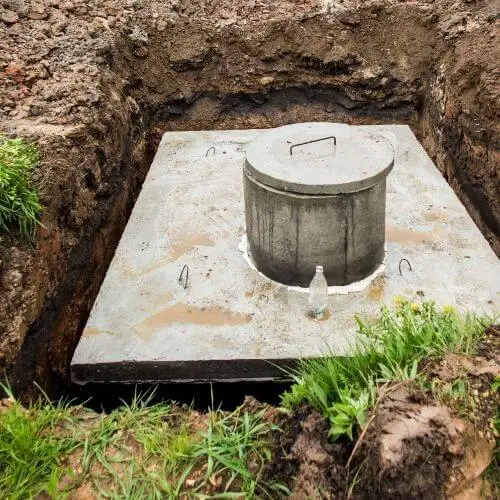“Can I shower if my septic tank is full” you probably asked? The concept of a “full” septic tank is a bit misleading. Because all of your home’s water drains into the septic tank, the tank will fill up quickly.
However, the tank mostly holds water, which is cleaned and distributed into your drain field. Stay around if you wish to learn more about the correlation between the septic system and the shower, as well as whether you may shower when your septic tank is full. [1]
Can I Shower If My Septic Tank Is Full?

Technically speaking, you can shower even if your septic tank is full. However, the major issue you’ll almost certainly encounter is slow seepage. As the septic tank fills up, the water in the bathtub, sinks, and other fixtures will drain at a much slower rate.
Shower drains, in some circumstances, do not flow into septic systems but into sewage lines instead because there is no waste generated within. This is uncommon, though, because shower drains are typically often connected to toilet drains by construction experts.
Nevertheless, it is important to know how long can you shower with a septic tank. This will help you avoid overstressing the tank. Generally, a shower should not last more than 20 minutes. Longer showers translate to more effluent flowing into the septic tank, thereby filling up pretty fast [2].
How septic tanks work

Septic systems are wastewater treatment structures typically utilized in rural areas with no centralized sewage lines. They treat wastewater from residential plumbing such as toilets, kitchen sinks, and laundry effluent using an innovative blend of technology and natural processes.
A septic system normally includes a septic tank and a leach field, usually referred to as an absorption field. Within the septic tank, organic matter is digested, while floatable stuff (such as oils and fats) and solids are isolated from the wastewater.
The liquid effluent from the septic tank is discharged into a network of pipework buried in a drain field, compartments, or other special devices designed to gradually release the wastewater into the soil.
Wastewater from the septic tank is pumped or gravity-fed through gravel, organic matter (such as peat and wood shavings), artificial wetlands, or other materials to eliminate or neutralize pollutants such as disease-causing microorganisms, nitrogen, phosphorus, and other impurities. Before wastewater is discharged into the land, some innovative systems are created to evaporate or disinfect it.
This is how a standard septic system functions:
- 1. All of your house’s water drains into the septic tank through a single main drainage line.
- A septic tank is a waterproof, subterranean container made of reinforced concrete, polyethylene, or fiberglass. Its job is to retain wastewater for long enough for solids to settle to the bottom and form sludge while grease and oil float to the top and form scum. The sludge is prevented from escaping the tank and entering the drain field by chambers and a T-shaped outlet.
- After that, the liquid waste (effluent) is discharged into the drain field.
- The leach field is a shallow, enclosed, unsaturated soil excavation. Pretreated wastewater is dumped into porous surfaces via pipelines, allowing it to filter through the soil. As wastewater filters down through the ground, it is accepted, treated, and dispersed, eventually discharging into groundwater. If the drain field becomes overburdened with liquid, it may flood, allowing sewage to seep to the earth’s surface or clogging toilets and sinks.
- Finally, wastewater filters down into the soil, naturally eliminating coliform bacteria, viruses, and nutrients. Coliform bacteria are bacteria that live primarily in the intestines of humans and other warm-blooded animals. It’s a sign of feces contamination from humans.
How to determine if your septic tank is too full
Here are several symptoms that your septic tank is full:
- Slow drains: If the water in your home drains slowly, your septic tank may be full. This is particularly true if you see many drains with a similar problem in different house locations.
- Sewage backup: Your septic tank may ignore the slow drainage indicator and immediately begin backing up sewage into your home’s pipes. This is revolting, and avoiding it is incentive enough to maintain a consistent pumping schedule.
- Pooling water in the leach field or unusually green grass in a specific area of your yard could indicate that the septic system is about to overflow.
- Weird smell: A terrible smell lingering in the air around your home, or possibly even within your home, could indicate that your septic tank is full. Gases escaping from the underground or up through the pipework into your home cause this.
How should you handle your filled-up septic tank?
If you are wondering whether or not you can shower if your septic tank is full, the trick is to be prepared. It is preferable to get your system pumped well before the rainy season, or a storm begins if it is already full. To allow water to move around your leach field and avoid puddles, ensure the rain gutter drains are clean and clear.
Unless you’re certain of what you’re doing, we recommend having your septic tank emptied every two or three years. Of course, you can always use the “cross that bridge when you get there” technique if you can’t gauge how long it would take for the septic to fill up.
You’ll need to recognize the indicators of a clogged septic tank to do so. This includes smelling unpleasant odors in the house and inspecting the tank-to-house cleanout.
How much water can a septic tank handle per day?
Before answering the question “can I shower if my septic tank is full,” it is important to determine how much water you use per day. The quantity of waste you dispose of, the tank’s size, the quantity of solid waste in the sewage water, and your water usage all factor into how long it would take for the septic tank to fill up and how often you need to pump it.
A typical on-lot septic tank can take up to five years to fill. But this is a general estimate since it depends on several factors. An individual typically utilizes about 75 gallons of water every day.
For sizing a septic tank, most guidelines recommend 150 gallons per bedroom [5]. The minimum capacity for a septic tank should be two days’ worth of effluent. In case your septic tank is full beyond this capacity, then consider not taking a shower until it is pumped.
If your family is rather large, you may already know that you will need to pump your septic tank more frequently. In addition, the more baths you take and the longer they are, the faster your septic tank will fill up.
If several people are living within the same house, the tank may need to be pumped every three years. However, if you live by yourself or have a small family, pumping the tank every 5 to 10 years should be enough.
Shower without a septic tank
As previously said, some people claim that they have never had to drain their septic tank before and that it has always worked properly. That’s because as the tank fills up with materials that are able to float and settle, some particles begin to escape.
When the septic tank fills up, and there is no more space for solids to be captured or stored, particles begin to seep through with the water. These are particles that have settled to the bottom of or near the sewer pipes and have softened sufficiently to flow with the water.
Small solid particles can escape due to the pressure exerted on the bottom layer. While this isn’t large enough to be dangerous, your property will emit a strong odor that both visitors and neighbors will notice.
Dealing with Septic Tank Problems
Clogs are the source of many septic tank issues. Everything that goes into the sewer system ultimately ends up in the septic tank, so homeowners should keep that in mind.
Everything goes into the septic tank, whether it is flushed down the toilet, poured into the sink, or obliterated with the garbage disposal.
Feminine sanitary items, paper towels, dental floss, eggshells, coffee cigarette butts, grounds, Band-Aids, diapers, and similar objects must never be flushed down the toilet. Cooking grease should also be kept away from drains. To avoid clogs, avoid pouring solids down your drain, and use your garbage disposal as little as possible [7].
Heavy machines such as cars, tractors, motorbikes, and other heavy equipment must also be kept out of the drain field. This is due to the fact that additional weight exerts strain on the pipes beneath it, which can result in broken lines and costly repairs. In addition, large trees near the leach field may need to be cut down.
The Bottom Line
If you’re wondering if you can bathe with a full septic tank, the answer is yes. Unfortunately, despite the fact that the shower water drains to the septic tank, there will be some seepage in the bathtub and sinks.
The size of your septic tank, the quantity of solid waste in it, and the number of people showering in the house will all influence how often you should empty it.
Consider what you mean by “full” when answering the question regarding bathing when the septic tank is full. If you feel it’s full and has to be emptied as soon as possible, it’s generally best to take as fewer showers as possible until that happens. However, if it’s full in terms of typical operation, you should be alright. If you see any of the warning signs of a clogged septic tank, consider calling your plumbing expert right away to schedule a pumping appointment.

Michael Davis is a heating & plumbing expert who currently works as independent contractor in SC. He also writes for Plumbertip.
For almost 10 years he worked on various plumbing tasks across South Carolina.


